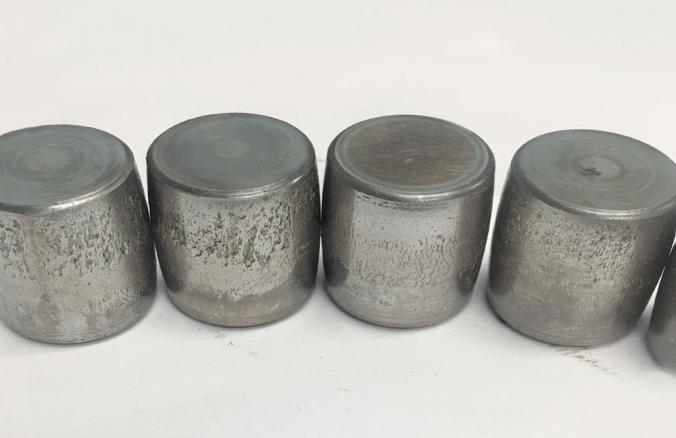Cloud-Enabled, On-Premises, or Both?
Which Data Structure Works Best for Your Maintenance Operations?

There are multiple reasons why organizations’ maintenance operations would select IIoT-integrated monitoring and control solutions.
Among these are:
- Reduced on-site hardware obsolescence
- •Secure access across multiple locations
- Expanded connectivity
Reduced On-site Hardware Obsolescence
A business starts or an organization forms. It begins to amass the equipment needed to perform its functions, as well as the automation solutions it will deploy. Oftentimes, these same entities also begin their own maintenance operations in order to keep their hardware in good working condition. Just as a company/organization accumulates equipment to run the business itself, it also accumulates IT hardware (servers, PCs, networking equipment, etc.) that is used to perform related tasks (such as those critical to automation and maintenance operations).
However, just like business-focused machinery (e.g., an aging piece of manufacturing equipment), an organization’s IT equipment can also start showing signs of aging. What may have been sufficient even just a few years ago may no longer be comparable to newer machines that can perform more advanced tasks. Organizations are now able to consider the costs associated with upgrading/retrofitting/replacing their onsite IT machinery versus the cost of moving applications to the cloud, where the cloud service operators are responsible for agreed-upon performance of their equipment. Many customers of cloud service providers are able to take advantage of an increase in processor performance to be able to take care of the heavy lifting of such tasks as advanced data analytics or, specifically for maintenance operations, predictive maintenance / fault detection and diagnostics (FDD) applications. Cloud service customers also appreciate the increase in capacity for rapid big data storage and retrieval.
There are even ways for existing production equipment to take advantage of the cloud. Even though newer modern equipment may come with the ability to tie in directly to the IIoT, some older hardware can be used with emerging edge devices (IoT gateways) to make it easier and more cost-effective to become “cloud-enabled” instead of undergoing a full replacement. These gateways provide multiple other benefits, as well, including the integration of multiple devices, sensors, and other equipment to publish messages to the cloud independently from subscribers. Software modules built into such gateways decrease latency, provide edge data processing, and empower edge analytics with onboard FDD and workflow technologies with real-time visualization of KPI data.
Secure access across multiple locations
Cloud security is accomplished by methods between both the applications themselves and the cloud service being used. For instance, this could be between the applications being accessed through an on-site edge device/IoT gateway and Microsoft Azure, to name one of many cloud services. Software, such as ICONICS IoTWorX™, running on the IoT gateway can be provisioned and can communicate data securely via the Microsoft Azure IoT Hub, taking advantage of the inherent security features that come with an Azure subscription. Additionally, cloud-based automation
(HMI/SCADA, historian, analytics, etc.) systems are backed up securely off site from where the data originates, keeping it safe from equipment damage or natural disasters.
Such decentralized security measures are compelling for businesses/organizations that outgrow one central geographical location. Global enterprises, especially, see the benefits in trusting the security options provided through their cloud service providers and the integrated software that utilizes them. ICONICS IoTWorX, for instance, can connect multiple buildings, factories, and equipment through secure TLS encryption and popular cloud platforms, such as Microsoft Azure and Amazon Web Services. Data can be accessed from anywhere through a pub/sub architecture for real-time visualization of KPI data at the edge. IoTWorX delivers an efficient, secure connection to the cloud through bi-directional AMQP for Microsoft Azure, as well as MQTT, REST, and WebSockets for third-party cloud providers.
Expanded connectivity
Another benefit of utilizing cloud-based automation solutions is that there is often an increase in the number of available communication protocols that can be used. This is in addition to the advanced security measures (bidirectional AMQP transport protocol [for Microsoft Azure] and MQTT, REST, and WebSockets [for third-party providers]) that cloud-based solutions provide.
For maintenance operations, it’s definitely a benefit to be able to “talk to” as many of the machines within the organization as possible. As an example, ICONICS IoTWorX software is compatible with multiple standard communication protocols. These include protocols specific to plant floor applications; such as OPC Classic, OPC Unified Architecture (OPC UA), and Modbus; as well as those specific to building automation (BACnet) and IT hardware (SNMP). This provides users with the ability to communicate with a wider array of connected equipment, ultimately enabling users to better detect potential issues and utilize an organization’s data, wherever it might be created, transmitted, or stored.
Cloud contingencies
For those concerned about the viability of cloud-based solutions during interruptions to internet service, there are measures that can be put into place to help ensure data doesn’t go missing or get corrupted. ICONICS has solutions that provide rapid data archiving and retrieval, including a "store-and-forward" feature that is useful when a network connection is unavailable; one specifically edge-based (IoT Hyper Collector) and the other traditionally on-premises or cloud-enabled (Hyper Historian).
IoT Hyper Collector is part of IoTWorX, the previously mentioned micro-SCADA software suite installed on a third-party IoT edge device. The collector has the ability to replay buffered data back locally, as well as to store and forward to the cloud when connectivity is present. For a more traditional on-premises approach, ICONICS Hyper Historian Collector also utilizes a similar store-and-forward feature. If a collector has lost connectivity to the logger, it will continue to buffer the data until connectivity is reestablished.
Best of Both
While the IoT Hyper Collector and Hyper Historian Collector are examples of how to retain data integrity both via the cloud and on-premises, respectively, there is nothing to prevent an organization from taking a hybrid approach. This bridges the gap between OT and IT and alleviates any "silo effect" of the organization’s data collection, storage, and retrieval. The same can be said for an organization’s entire automation solution and related data, as a whole. Some may benefit from a strictly cloud-based solution. Others may still have reason to remain with an entirely on-premises one. However, neither has any restriction towards using elements of the other in such a hybrid scenario.
Each organization will make its own determination regarding what works best for their business processes and operations (cloud, on-premises, or hybrid), as well as to the automation software vendors that can best support it.











